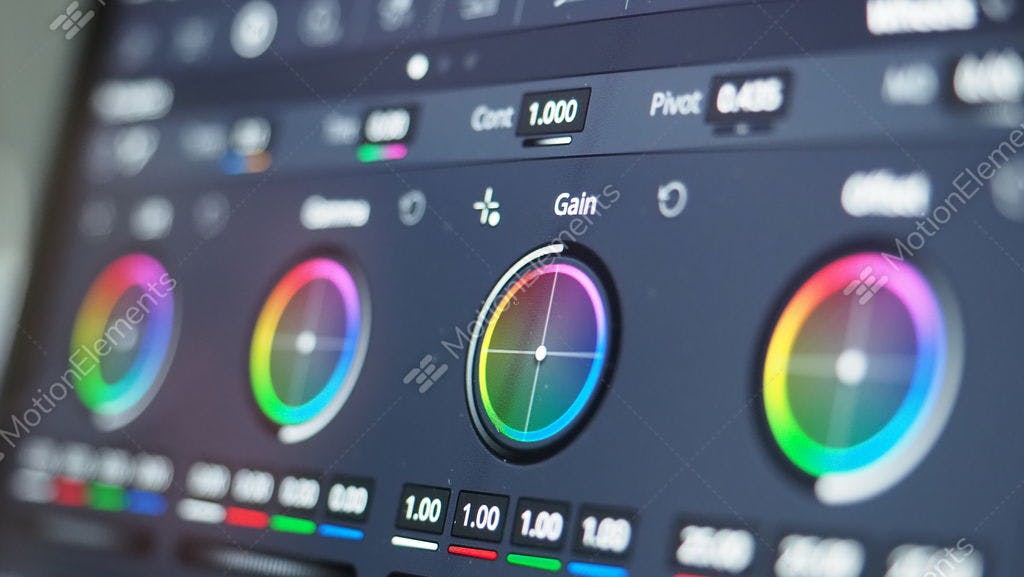Ever wondered how some videos have that magical touch, making you feel a certain way just by looking at them? That, my friends, is the magic of color grading. It’s that secret sauce that adds depth, emotion, and personality to your videos. Whether you’re editing your travel vlogs, cinematic masterpieces, or just dabbling in content creation, understanding color grading can be a game-changer. Let’s embark on this colorful journey together and turn those good videos into great ones!
1. Understanding the Basics of Color Grading: Color grading might sound like a task reserved for the pros, but it’s truly for anyone with a vision. It’s about painting your canvas (or, well, your footage) with colors that tell your story the way you want it told.
- Why It's a Big Deal: Imagine watching a sunset without its golden hues or a thriller without its dark, moody tones. Color grading helps you control the narrative, set the mood, and even fix those "oops" moments we all have while filming.
- Tools of the Trade: Dive into the world of color wheels, curves, and sliders. These aren't just fancy terms; they're your paintbrushes for bringing your vision to life. We'll learn how to use them to play with light and shadow, add warmth, or create a cool, mysterious vibe.
- Before and After Magic: Ever see those dramatic transformations in home renovation shows? That’s what color grading can do for your videos. We’ll look at real examples to see how a few tweaks can turn a bland shot into a cinematic piece.
2. Choosing the Right Color Palette: The colors in your video are like the characters in a story; they need to resonate with the theme and emotion you want to convey.
- Storytelling with Colors: Colors are not just pretty; they're powerful storytellers. A blue hue can whisper a sad tale, while a burst of orange can shout with joy. Picking the right color palette sets the tone for your entire video.
- The Psychology Behind Colors: Ever felt a certain way and didn’t know why? Colors have a sneaky way of influencing our emotions. We’ll explore how to use this to your advantage, creating a connection with your audience without them even realizing it.
- Palette Perfection: Choosing the right colors can be daunting, but fear not! We'll share some tips and tricks on selecting a palette that complements your footage and enhances your story, making your videos not just seen, but felt.
3. Enhancing Contrast and Saturation: It's time to make those colors pop and bring your video to life. Contrast and saturation are your best friends here, giving your footage that "wow" factor.
- Contrast – The Drama Queen: Contrast is all about drama. It’s what makes your blacks blacker and your whites whiter, adding depth and dimension. We'll guide you through finding that sweet spot where your video looks dynamic but still natural.
- Saturation – The Mood Setter: Saturation controls the intensity of colors. It can turn a dull, washed-out scene into a vibrant, lively one. But beware, overdo it, and you might end up in cartoon territory. We'll learn how to adjust saturation to enhance your video's mood without losing its authenticity.
- Balancing Act: Like in life, balance is key. We’ll walk through how to balance contrast and saturation, ensuring your video strikes the perfect harmony between being eye-catching and keeping it real.
4. Creating a Consistent Look: Consistency is what separates the amateurs from the pros. It’s about ensuring your video flows smoothly, with each shot complementing the next.
- Why Consistency Rocks: A consistent look not only makes your video more professional but also helps tell your story more coherently. It’s like having a consistent theme in a novel, where every chapter adds to the narrative.
- LUTs and Presets – Your Best Pals: Think of LUTs (Look-Up Tables) and presets as your cheat sheets. They can save you tons of time by applying a specific look to your footage with just a click. But remember, customization is key to making it your own.
- Stitching It All Together: We’ll share some tips on how to ensure that your entire video feels like one piece, even if it’s shot over different days, locations, or lighting conditions. It’s like making a quilt, where every piece has its place, contributing to the bigger picture.
5. Advanced Color Grading Techniques: Ready to level up? These advanced techniques will add that professional polish to your videos, making them stand out in a sea of content.
- Curves and Selective Adjustments: It’s time to get a bit technical, but don’t worry, we’ll keep it fun. Learning to master curves and selective color adjustments can help you fine-tune your grading with precision, giving you control over every shade and hue.
- Cinematic Looks for Days: Ever wanted your video to look like a film? We’ll explore some advanced techniques to give your footage that cinematic flair, drawing inspiration from your favorite movies.
- Keep Learning and Experimenting: The world of color grading is vast and ever-evolving. We’ll point you to some amazing resources to keep learning and experimenting. After all, practice makes perfect, and in the world of video editing, practice makes for stunning visuals!
Color grading is not just a step in the video editing process; it’s the brushstroke that turns your footage into a masterpiece. By mastering the basics and experimenting with advanced techniques, you can elevate your videos from good to breathtaking. Remember, every video is a canvas, and you are the artist. So go ahead, play with colors, and let your creativity flow.
